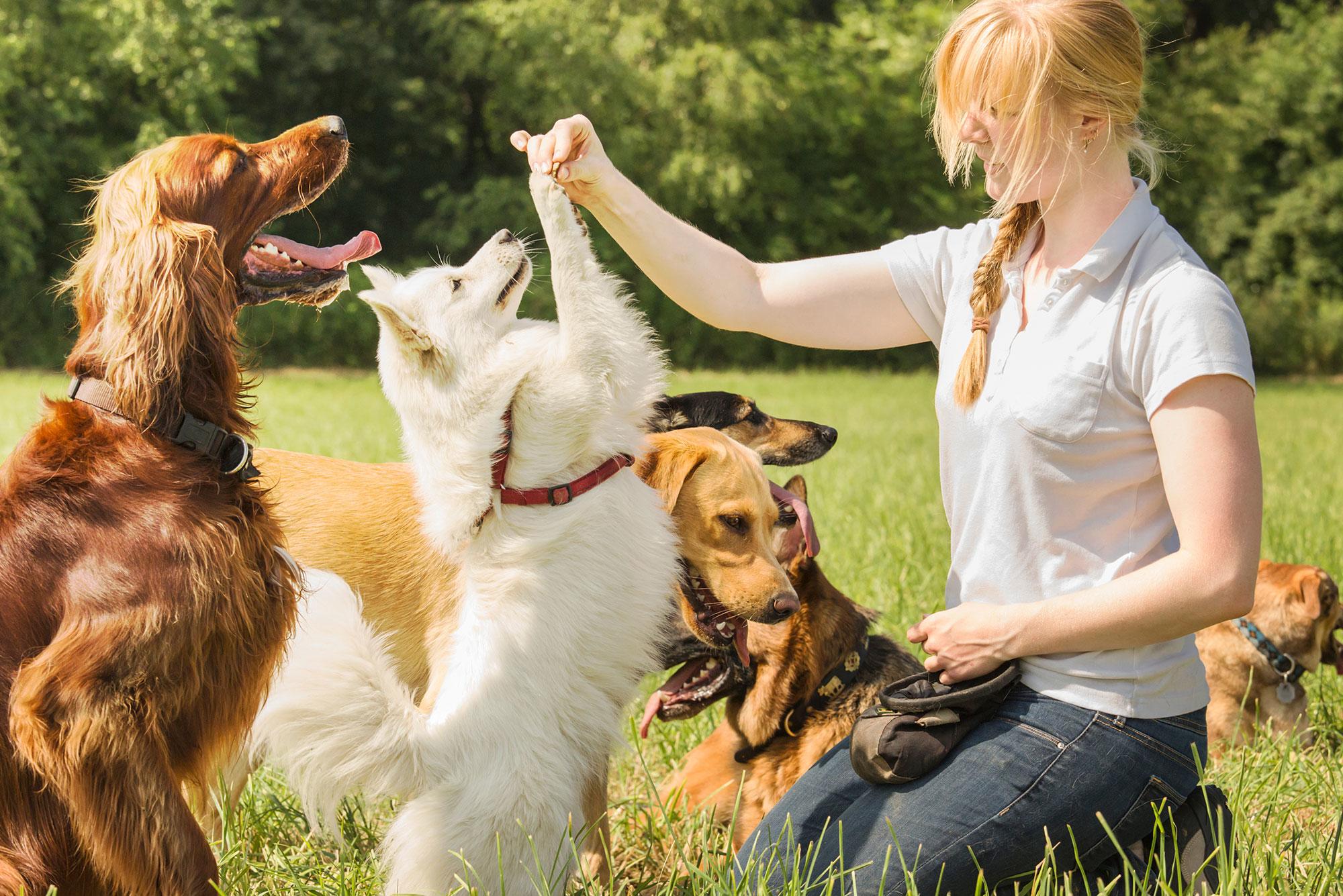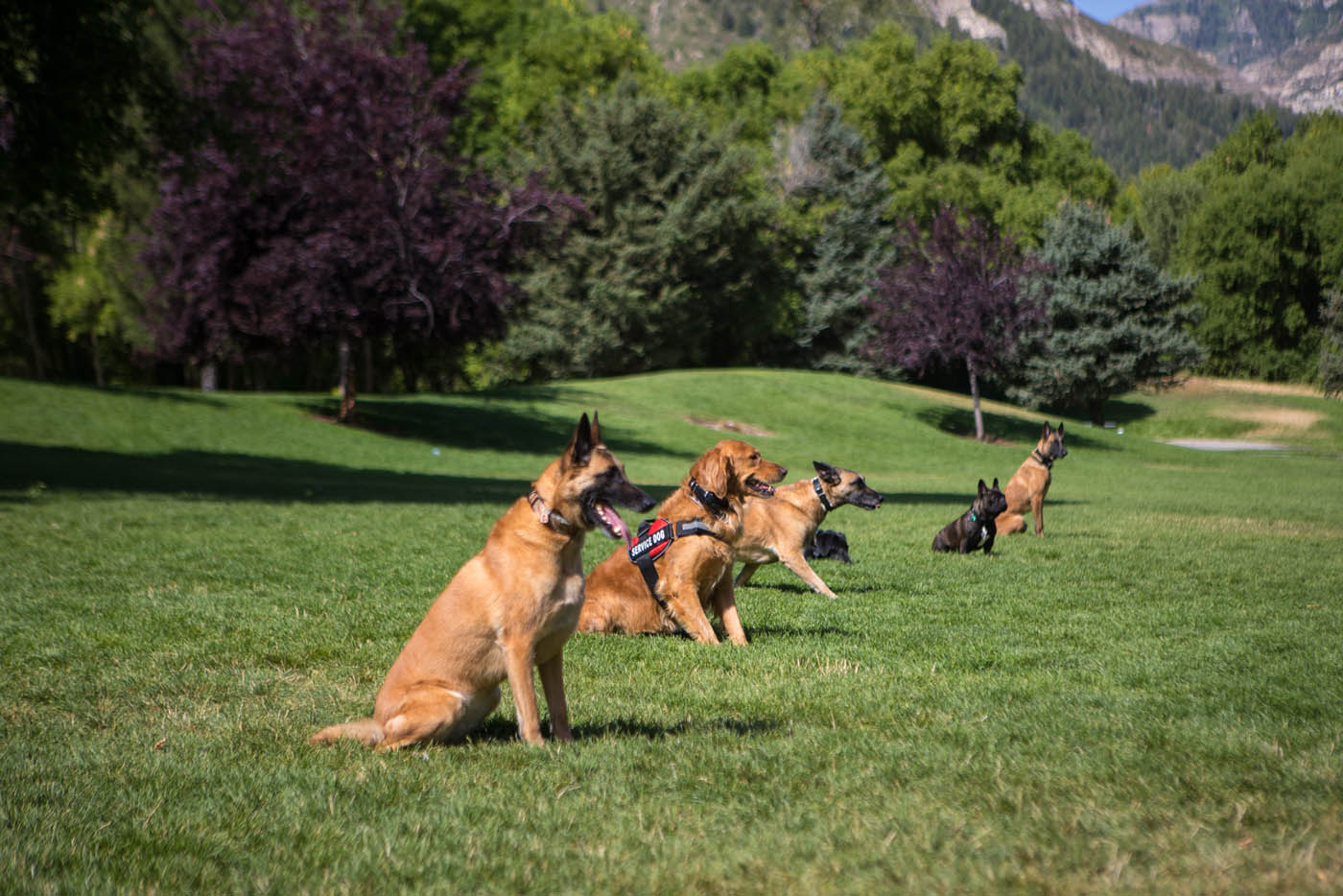Positive Reinforcement in Dog Training: A Humane Approach to Success
Positive Reinforcement in Dog Training: A Humane Approach to Success
Blog Article
Transform Your Canine's Actions With Proven Training Techniques
Transforming your dog's actions needs a nuanced understanding of their specific traits and needs, as well as the application of tried and tested training methods. Consistency in your training strategy not only boosts obedience yet likewise fosters a deeper bond of trust fund and respect in between you and your pet dog.
Recognizing Canine Behavior
Recognizing dog actions is vital for effective training and interaction in between human beings and their canine buddies. Dogs, as social animals, display a variety of actions affected by genes, environment, and experiences - Dog training. Acknowledging these behaviors helps owners tailor their training approaches to fulfill the specific demands of their pet dogs
Secret aspects of pet behavior consist of body movement, vocalizations, and social interactions. A wagging tail usually suggests excitement, while a lowered head might indicate entry or concern. Understanding these signals can help proprietors analyze their pet dog's psychological state and respond suitably. Additionally, socializing plays a crucial function in forming actions; dogs that interact favorably with different people and other pets are typically much more adaptable and well-adjusted.
In addition, recognizing stress and anxiety signals-- such as pacing, panting, or evasion habits-- can stop escalation into much more serious issues. Owners who are in harmony with their dog's behavior can develop a risk-free and nurturing environment, promoting trust fund and enhancing the training procedure. Ultimately, a deep understanding of canine behavior lays the foundation for an unified relationship and effective training end results, making certain both canines and their owners grow with each other.
Favorable Reinforcement Strategies
Positive support strategies are extensively recognized as one of the most efficient approaches for training pet dogs, cultivating a positive learning setting. This method involves fulfilling wanted habits with treats, praise, or play, thereby encouraging the dog to duplicate those habits. Unlike punishing techniques, positive reinforcement develops count on and reinforces the bond between the pet and the trainer.
Rewards need to be provided immediately following the desired actions to help the pet dog make the link. Uniformity is likewise necessary; using the same commands and benefits aids the canine understand what is anticipated.
It is necessary to keep in mind that favorable reinforcement is not about bribery; instead, it has to do with reinforcing etiquette. Over time, as the pet dog learns to associate specific activities with favorable results, the frequency of rewards can be slowly minimized, transitioning to verbal praise or intermittent rewards. This approach not only encourages obedience yet also advertises a satisfied and confident pet, making training an extra enjoyable experience for both parties included.
Attending To Usual Concerns
Addressing usual issues during pet training is important for making sure a successful and unified connection between the pet dog and its owner. Several canine owners run into behavioral challenges, such as too much barking, jumping, and leash drawing. Comprehending the origin causes of these habits is critical for efficient training.
To alleviate this, give ample physical exercise, psychological stimulation, and possibilities for social communication with both human beings and other pets. Educating the pet to sit upon greeting can redirect this actions favorably.
Chain pulling is one more common problem, frequently arising from a canine's passion to discover. Making use of correct chain handling strategies, incorporated with training procedures that encourage loose-leash walking, can considerably improve this habits.
In enhancement, issues like source securing or splitting up anxiety call for customized methods. Progressive desensitization and counter-conditioning can be effective in resolving these challenges. By recognizing and proactively taking care of these common issues, canine owners can foster a more satisfying training experience and enhance the bond with their canine companions.
Uniformity in Training

To accomplish uniformity, it is crucial that all participants of the household follow the very same training approaches. For circumstances, making use of the same spoken hints and hand signals makes sure that the pet dog obtains uniform messages. view website Furthermore, the timing of corrections and rewards must correspond; prompt reinforcement boosts the chance that the canine will connect the behavior with the result.
Routine practice sessions, combined with organized timetables for feeding, strolling, and playtime, help pets prepare for and comprehend their setting, making them extra responsive to training. Eventually, uniformity promotes a feeling of security and trust, empowering dogs to learn extra efficiently.
Structure a Strong Bond
How can promoting a strong bond between a canine and its proprietor enhance the training experience? When a pet really feels safe in its connection with its proprietor, it is much more likely to display favorable habits and be receptive to discovering.
Furthermore, a strong bond assists in far better communication. Dogs are experienced at reviewing human hints, and a trusting connection permits more clear signals throughout training. Proprietors that spend time in structure this bond with play, socializing, and favorable support produce a setting where canines really feel inspired and eager to discover.
Furthermore, a reputable link can minimize stress and anxiety and behavior issues, as pets are less most likely to act out when they feel understood and taken care of. For that reason, prioritizing the advancement of a solid bond not just enhances the training experience but likewise adds to a happier and much more well-adjusted dog. Inevitably, the journey of training transforms right into a collective collaboration, resulting in lasting behavior renovations.
Conclusion

Proprietors who are attuned to their canine's habits can develop get redirected here a nurturing and secure setting, cultivating trust fund and improving the training procedure. Eventually, a deep understanding of canine actions lays the foundation for an unified connection and reliable training outcomes, making sure both dogs and their owners flourish with each other.
Addressing common issues throughout canine training is important for guaranteeing a unified and effective relationship between the dog and its owner.Uniformity is a foundation of efficient canine training, as it establishes a clear framework for the canine to understand actions and assumptions.In conclusion, changing a pet dog's behavior with verified training approaches needs an understanding of canine habits, the application of favorable reinforcement strategies, and a focus on consistency.
Report this page